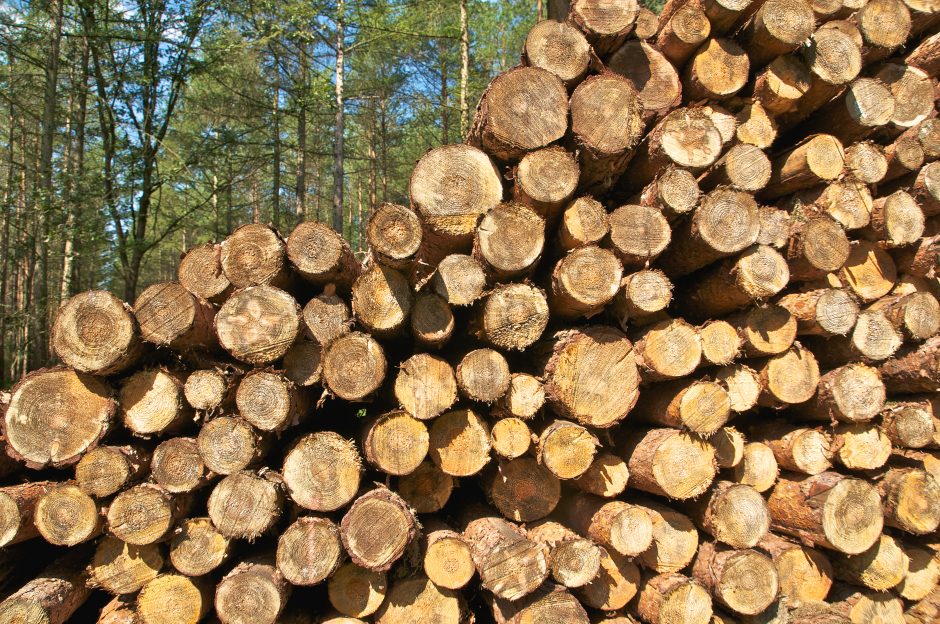The role of cities and regions in transforming wood value chains

Climate smart forest economies
It’s a crucial decade for the future of the planet: to have a reasonable chance of limiting global warming to 1.5°C by 2100, global emissions must fall by about half by 2030. While most efforts to achieve this goal have focused on reducing fossil fuel use, new scientific evidence shows that natural climate solutions can deliver up to 37 percent of the emissions reductions needed by 2030. According to the Global Alliance for Buildings and Construction, buildings account for nearly 40 per cent of global energy-related CO2 emissions. Population growth and rapid urbanisation are driving further growth in the global building stock, which is expected to double by 2050. Business as usual is not an option to realise this growth; instead, an ambitious transition to zero-carbon, nature-friendly, and circular building materials is needed this decade. One solution could be forests.
Forest systems and the built environment are both complex systems, and linking the two requires re-connecting, strengthening, and creating a new set of value chains. These value chains form a forest-to-frame economy that is part of a broader Climate Smart Forest Economy (CSFE), capable of unlocking the full climate potential of forests and forest products in a sustainable and responsible manner. A CSFE catalyses market demand from sectors that need rapid decarbonisation (e.g., building construction) while adhering to social and environmental safeguards. In a CSFE, carbon is locked in at three levels:
- Sink: increasing forest area and incentivising sustainable management of existing forests so they can maintain their function as carbon sinks.
- Storage: promoting longer-term storage of carbon in harvested forest products by increasing the medium- and long-term carbon stock in the built environment.
- Substitution: replacing high fossil-carbon footprint products with wood-based products. In the construction sector, for example, steel and cement can be replaced by mass timber products.
An example of a forest carbon sink could include reforestation, which (if done properly) is an effective natural climate solution. It has the potential to sequester 8-10 gigatons of carbon dioxide per year by 2030 (the equivalent of removing up to 2.16 billion cars from our roads). In addition, managed forests can be sustainably harvested to ensure that their role as carbon sinks is maintained while they continue to store carbon in wood-based products.
Creating a CSFE requires the active involvement of a broad range of value chain actors in the forest and built environment sectors, including foresters, investors, timber processors and builders. It also needs a player capable of bringing these diverse actors together to collaborate, shape the agenda and drive forward transformative change. This is where governments, and especially local and regional authorities, play a crucial role.
Local authorities shaping markets
Local and regional authorities are key players in the global response to the climate crisis, but also in addressing social and economic inequalities and vulnerabilities exposed by COVID-19. Tackling complex societal challenges like these requires a vision, a mission, and the confidence of public sector actors to think and act in a more systemic way.
Public sector actors are more than facilitators and administrators. In The Entrepreneurial State (2013) and Mission Economy (2021), Marianna Mazzucato rethinks the role of government in co-shaping and co-creating markets and innovation to tackle critical societal problems with a public purpose.
Throughout history, governments have played a key role in creating public and private value. The EU Missions launched in 2021 set ambitious, mission-driven goals to bring concrete solutions to some of our greatest challenges. They are a coordinated effort by the European Commission to pool the necessary resources – funding, policies, and regulations – to support Europe’s transformation into a greener, healthier, more inclusive and resilient continent. But in this time of converging and overlapping crises, there is a strong need for more than European and national entrepreneurship. What we need is a radical local transformation where local and regional authorities take a market-shaping role.
Local and regional authorities represent governance, policy, and investment at a level large enough to address systemic problems, but local enough to understand and meet specific community needs and provide democratic mandates for action. As such, they sit at the intersection of the world’s economy and value chains and the lives of individual citizens, and are well placed to drive transformative change.
Transformation as a win-win
For local and regional authorities, the idea of creating a locally led transformation programme can feel out of reach after decades of operating in a way that does not mandate or promote transformative change. Transformation can be enabled at the level of European Missions, but ultimately change must come from the ground up. Local and regional authorities are perfectly placed to step up and facilitate this change. Organisations such as Climate KIC and its partners support those willing to engage in this transition.
The Scottish city of Glasgow is leading the way by implementing the Climate Smart Forest Economy Programme (CSFEP) with an overarching goal to sustainably and responsibly unlock the full climate potential of forests and forest products. The program aims to increase the use of climate smart forest products by catalysing market demand from sectors that need rapid decarbonisation (such as construction) while meeting social and ecological safeguards. The CSFEP is a collaborative initiative bringing together Climate KIC, the World Economic Forum, and the World Resources Institute, with seed funding from Good Energies Foundation. It also counts on an independent scientific council from The Nature Conservancy, and support from Dalberg Catalyst. Read more about the CSFEP here.
